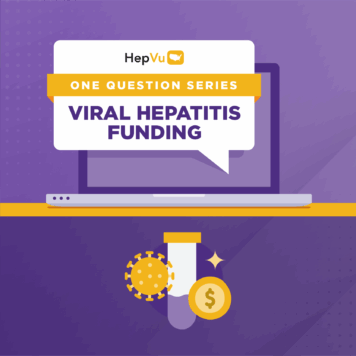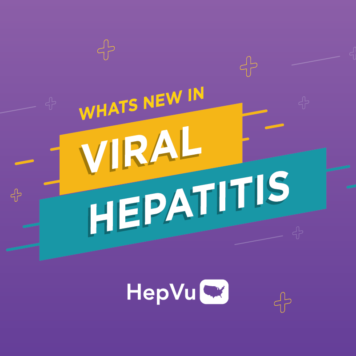Dr. Su Wang serves as the President of the World Hepatitis Alliance and is the Medical Director of the Center for Asian Health at Saint Barnabas Medical Center.
Q: You’ve built your career advancing Asian American health and wellness, specifically focusing on Hepatitis B. What got you started on this path and how has it evolved over time? Additionally, how has your personal experience with Hepatitis B influenced your work as an advocate?
I didn’t start off my medical career thinking that I was going to focus on Asian health, hepatitis, or even patient advocacy. When I think about how my career has evolved, it was built off of my interest in public health, which led me to pursue a Master’s of Public Health.
I did a combined internal medicine-pediatrics residency in Washington D.C. and a two-year-long fellowship with the Epidemic Intelligence Service at Centers for Disease Control and Prevention (CDC). Eventually, I began working at a federally qualified community health center in New York City and because I was working in Chinatown, I started looking at diseases that impacted the Asian community, specifically Hepatitis B. Even though I was living with Hepatitis B, how I ended up initially working in this field was more of a happy coincidence.
Like many people living with Hepatitis B or any other chronic condition, I just wanted to live my life and not be defined by a medical condition. However, after working with so many patients in the community, I realized that one of the main issues is that people do not speak out about their experience living with Hepatitis B and we don’t have a large network of patient voices, especially compared to diseases like HIV. My willingness to become a public advocate grew from there. Eventually, I was asked to sit on the board for the World Hepatitis Alliance, a patient-driven organization that aims to harness the power of people living with viral hepatitis to advocate for hepatitis elimination. Working closely with passionate patient advocates has taught me what it meant to be empowered and how powerful the voice of the patient is.
Being around patients representing different regions of the world has opened my eyes to see the kind of issues that people suffer in other countries. Globally, there is a lot of people who face great stigma and discrimination and feel very alone and unable to speak out. For those of us who do have a voice, it is our job to speak out and dismantle some of the barriers to care that many people experience. This kind of ground movement for awareness is quite important when we talk about reducing the burden of a disease in a community- stigma and discrimination are big issues and must be addressed.
Q: In the latest HepVoice issue, the World Hepatitis Alliance focused on COVID-19 and other infectious diseases. What steps can we take to re-prioritize hepatitis elimination efforts alongside our national response to the COVID 19 pandemic?
On Wed. July 29th, the World Hepatitis Alliance is hosting a webinar on the World Health Organization’s goal to eliminate viral hepatitis by 2030 and what it means to be only 10 years away from that target year. Additionally, we will address the impact of COVID-19 and its impact on our elimination efforts. While hepatitis is not the only disease area impacted by this pandemic, there’s been a stop in many services. There has been a diversion of resources and staff away from viral hepatitis to countering the COVID-19 crisis. Additionally, people are afraid to seek care and engage with in-person healthcare settings.
This crisis is going to create problems we will be dealing with for many years to come. Beyond the virus itself, people are going to suffer health consequences from the COVID-19 disruption. Additionally, we are worried that infants have not been able to receive their birth vaccinations and there may be a delay in completing the three-dose vaccine series for Hepatitis B. It is likely a lot of adults have also not been able to complete or even start their Hepatitis B vaccine series. This kind of scenario is a great time to push for the two-dose series, which is completed in only a month as opposed to the standard six months.
What do we need to do to reprioritize? I think those of us in the field need to regroup and think about how we catch up and take the opportunity to turn this crisis into something positive. Many of us are now seeing care services be completely transformed through telehealth. Patients can now be serviced from their homes and all of a sudden you have removed transportation and the potential fear of stigma that previously existed as barriers to care.
I’ve heard in other countries, such as the UK, patients have traditionally had to go to the academic hospital to get their medications but are now able to arrange deliveries from community pharmacies. These examples will be really good lessons for us to be more patient-centered as opposed to healthcare-centered. I do think we can look at the positive side of things. There are good opportunities for some more innovative ways of reaching patients.
Q: COVID-19 has disrupted many services for complex health conditions like HIV, cancer, and viral hepatitis. When considering elements like access to care, stigma reduction, testing, and hepatitis education, where have you seen COVID-19 causing the biggest obstacles?
I think different obstacles depend on the region, the restrictions in place, and how bad the COVID-19 epidemic is there. For example, in the U.S. we can go to retail pharmacies to get our medications. Whereas in a lot of areas, for example, Guatemala, you may have to travel to large cities which is now complicated by border closures. People cannot travel to their usual locations to get their medications.
This crisis has highlighted the need for increased screening and testing as preventative measures. People are finally understanding how important good testing is. Lately, attention has been paid to the quality of tests for COVID-19 at the start of this crisis. People are now realizing that tests with low sensitivity and specificity can create a false sense of security where people who test negative may erroneously think that they’re not infected. Whereas, hepatitis testing has undergone rigorous evaluation and we have tests with very high sensitivity and specificity that have been externally validated. We must emphasize that we have amazing, excellent tools that are available for diagnosis and treatment. There is a cure for Hepatitis C and great treatments for Hepatitis B. This is hopefully opening people’s eyes to the components needed for the elimination of an infectious disease.
If there is education and awareness to help people grasp the nature of a disease and how it’s transmitted, then you can do something about it. We know transmission of both Hepatitis B and C is largely bloodborne and not respiratory like SARS-CoV-2, the virus that causes COVID-19, so our protective measures are different. We can utilize blood screening, clean needles and other harm reduction measures, and universal precautions in healthcare settings to reduce transmission. Importantly, we already have an effective vaccine for hepatitis B. Looking at the similarities of these epidemics and how far we’ve come with hepatitis interventions (compared to COVID-19 which is in its infancy), highlights that we can end the viral hepatitis epidemic.
Q: World Hepatitis Day is July 28th and this year, the theme is “Find the Missing Millions”, which focuses on diagnosing and treating hepatitis for the millions of people who do not know they have the virus. How can we best utilize the attention for this awareness day tangibly to accomplish these goals in the U.S. and elsewhere?
World Hepatitis Day is a great opportunity for people who work in the field, are personally affected by hepatitis, or have a personal connection with somebody living with hepatitis to gather together and make our voice heard around the world – the day is a lightning rod for attention. I think we need to show people that there’s an urgency, just like we’ve seen with COVID-19. People should know that, globally, more people die every single year from viral hepatitis than those who have died from COVID-19 so far.
We have become complacent. This is a really good time to energize people and to demand that there needs to be more action. It’s an outrage that people can’t get tested or treated or cured. We live within a system that creates barriers for care and we need to learn how to break them down. I think that needs to be one of our messages. Peoples’ lives are at stake and this issue should be made as urgent as COVID-19, so we can begin moving mountains to address the issue.
Q: Beyond awareness days, how can we better encourage individuals to be mindful of viral hepatitis within their own personal social circles and within the wider public health community?
Patients aren’t always comfortable divulging their infection status to loved ones, friends, or partners who may need to be tested. We need to be better at framing this as a way for them to help their loved ones. I often tell patients “I know that you’re afraid, but your concern for your sibling, your parents, or another loved one should exceed the fear you have.” Meaning, if you’re concerned about your family, the desire for them to be healthy should exceed your own fear.
I think it’s important for everybody to realize they can make a difference. You don’t have to be out there marching, but there are little things you can do within your own circle. Even wearing a t-shirt or sticker – these are all things that can make a difference. All movements have their symbol. For instance, breast cancer has the pink ribbon and LGBTQ pride has the rainbow flag. In the NOhep movement, we are hoping the green circles become our symbol that is visible even beyond the hepatitis circles. Hepatitis elimination should be a social justice issue, a gender equity issue, and an equality issue – we need to move beyond the very narrow sector we’ve been in thus far. Everybody has their own circles of influence and I encourage you to use yours and share these messages.
Health messaging and education is also important to share within your circles. There are so many things on social media now that people can easily share. I encourage everyone to share the messages that you see on World Hepatitis Day. One thing you can do is share within your own networks because they may not be plugged in the same organizations that are providing the messages you may see. We all have a chance to educate people. People may not care about hepatitis per se, but when someone they trust and know shares information, they often listen and pay attention.




